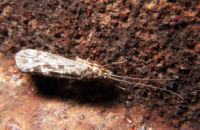
Photo from wikipedia
BACKGROUND AND OBJECTIVES Environmental noises may create physiological and psychological disorders in patients hospitalized in the CCU. Therefore, this study was conducted to investigate the effects of nature sounds on… Click to show full abstract
BACKGROUND AND OBJECTIVES Environmental noises may create physiological and psychological disorders in patients hospitalized in the CCU. Therefore, this study was conducted to investigate the effects of nature sounds on physiological indicators among patients in the CCU. MATERIALS & METHODS This randomized clinical trial was conducted on 93 patients hospitalized in the cardiac care units of three teaching hospitals in 2016. The patients were selected using the convenient method with three randomized blocks. The patients were assigned into three groups as nature sounds, silence that received a set of headphones without playing sounds, and control groups. In addition to routine care, the patients in the intervention group listened to nature sounds for 30 min using a set of headphones for two days. The patients in the control group only received routine care. In addition to routine care, the patients in the silence group used a set of headphones for 30 min to block noises and no sound was played for them. Physiological indicators such as heartbeat rate, systolic and diastolic blood pressures, respiration rate, and arterial O2 saturation were assessed using monitoring devices. Descriptive and inferential statistics were used for data analysis via the SPSS software. FINDINGS Nature sounds and silence had no statistically significant effects on physiological indicators. However, a statistically significant difference was reported in the heart rate in the nature sound group before and after the intervention in the first day of the intervention (P = 0.046). In the second day of the intervention, there were statistically significant differences in the diastolic blood pressure in the nature sounds group (P = 0.028), heart rate (P = 0.001) and diastolic blood pressure (P = 0.013) in the silence group, and heart rate (P = 0.014) in the control group before and after the intervention. CONCLUSION Listening to nature sounds or the use of headphones blocked environmental noises and could influence mean arterial pressure. Future studies can examine the effects of this intervention implemented for a longer term using nature sounds by patients.
Journal Title: Complementary therapies in clinical practice
Year Published: 2017
Link to full text (if available)
Share on Social Media: Sign Up to like & get
recommendations!